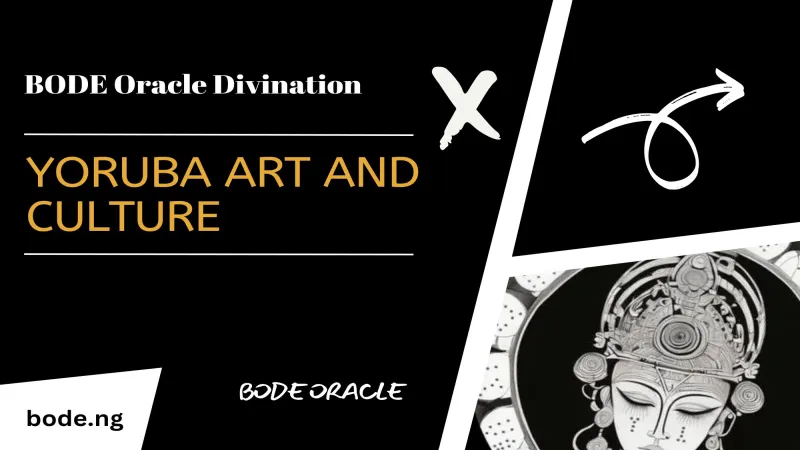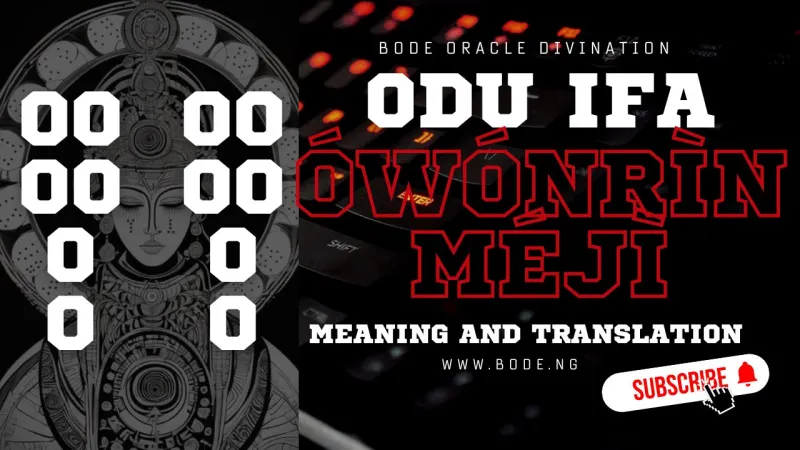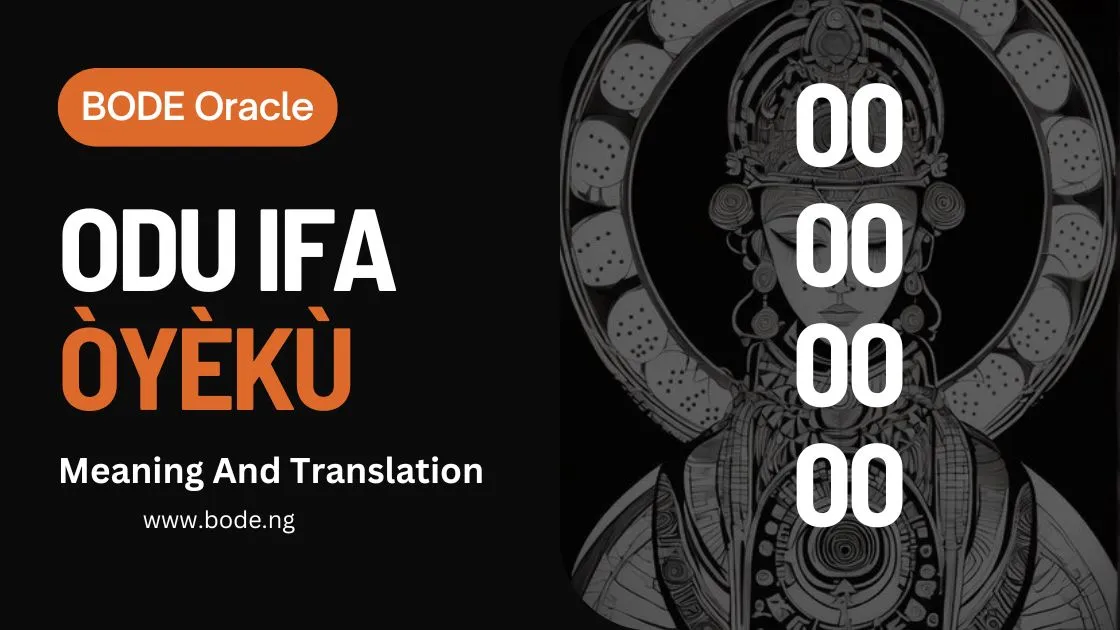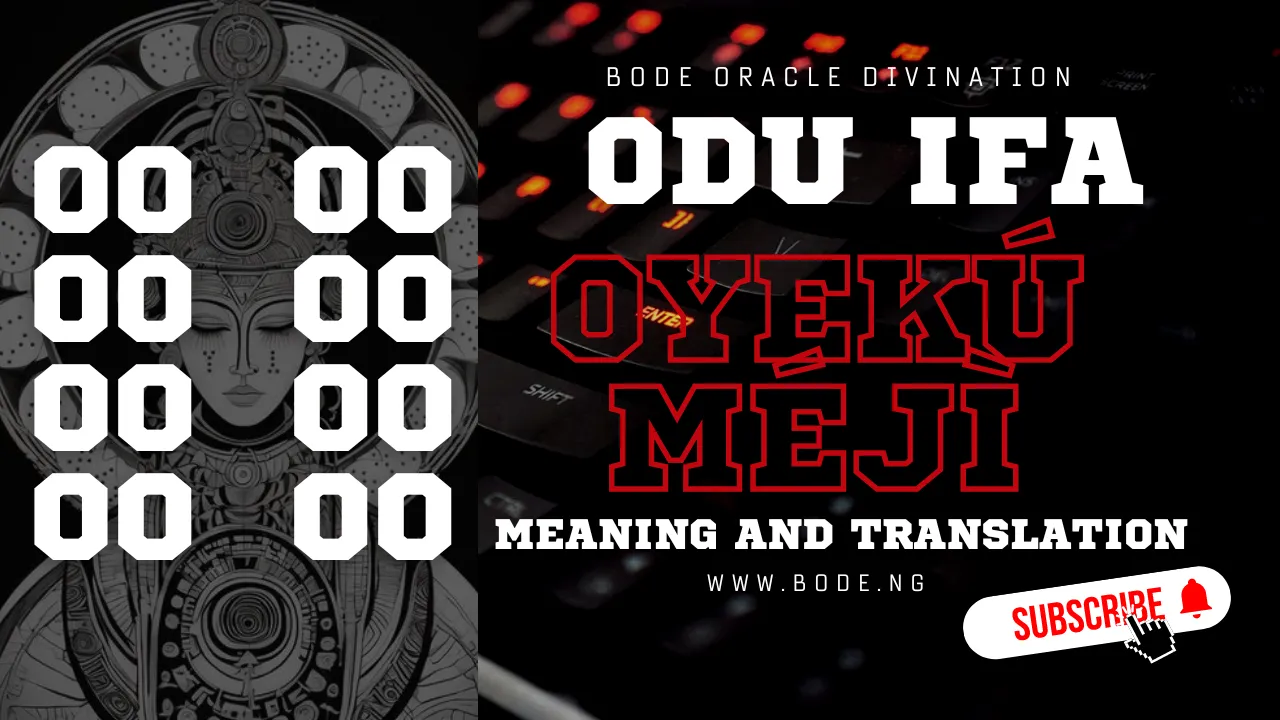Yoruba art remains vibrant and influential, embodying a legacy that has been carefully preserved to convey history and traditions across generations.
The Yoruba people of West Africa are renowned for their exceptional artistic traditions, which are among the finest in Africa. This rich and prestigious heritage is woven into the fabric of Africa's vibrant cultures.
Yoruba art reflects the community's deep history, rich traditions, and unparalleled artistic creativity, crafting a captivating narrative through its expressive forms.
Yoruba art is more than a fact to creativity, it serves as a cornerstone of cultural identity, a medium for spiritual communication, and a safeguard for centuries-old traditions.
From amazing sculptures representing ancestral spirits to the rhythmic beats of traditional music and dance, Yoruba art connects the past, celebrates the present, and serves as a bridge to the future.
Read More
Iwe Odu Ifa by Ifayemi Awopeju Bogunmbe
Odu Ifa Signs And How They Are Cast
What Are Traditional Yoruba Visual Arts?
Many Yoruba visual arts were closely tied to the royal palaces, serving as adornments for the royal family, decorative elements for the palaces, and attire for palace workers that reflected their status.
Yoruba visual art also played a significant role in religious expression, reflecting the deep spirituality of the Yoruba people.
Images of ancient shrines often featured altars adorned with sculptures and figurines that embodied the deities, highlighting their divine attributes.
One of the most treasured forms of Yoruba art is sculpture, which holds a prominent place in the cultural and artistic heritage of the Yoruba people.
Over the years, Yoruba sculptures have been crafted from diverse materials, including ivory, wood, metals, terracotta, and more.
Among the most esteemed are the iconic brass and copper Ife heads from the ancient city of Ife. These sculptures are renowned for their lifelike features and serene expressions, showcasing an unparalleled mastery of realism.
Another notable example is the Ere Ibeji twin figures, carved from wood to honor the unique status of twins in Yoruba culture.
These sculptures represent the spirits of deceased twins and are central to various traditional rituals. Interestingly, the Yoruba people have the highest rate of dizygotic twinning in the world, further emphasizing the cultural importance of twins.
For the Yoruba, the origin of art is deeply rooted in their mythology, where Olódùmarè tasked the artist deity Obatala with shaping the first human figure from clay.
People Also Read
Opon Ifa The Ifa Divination Tray
Ifa Divination And How It Can Solve Your Problems
Yoruba Mythology Deities And Orisa
Another significant form of Yoruba sculpture is masks, often created as representations of deities. Before crafting these sacred objects, artists must sanctify themselves, as the masks are believed to serve as mediums for deities to manifest in the physical world by possessing the wearer.
Yoruba sculptures are deeply spiritual, embodying the connection between the physical and the divine. They frequently depict deities, ancestral spirits, and historical figures, blending physical likeness with profound metaphysical meaning.
The choice of materials, wood, bronze, and terracotta, adds layers to their significance, with each medium carrying its own cultural and artistic narrative.
In Yoruba art, pottery represents the intersection of utility and aesthetics. Yoruba potters demonstrate remarkable craftsmanship, shaping clay into everything from simple household items to nice ceremonial vessels.
Each piece tells a story of tradition, culture, and identity, preserving the essence of Yoruba heritage. The functionality of Yoruba pottery is as diverse as its forms.
Pots were crafted for cooking, storing soup, fetching water, and even serving as clay stoves or ovens. Small clay money boxes, similar to piggy banks, were used to save spare cash.
Some pots held herbal medicine, while others, such as the placenta pot, were used for burying the placenta after childbirth. There were also pots dedicated to deities, underscoring their spiritual significance.
Patterns and motifs engraved on the pots carry deeper meanings, reflecting spiritual beliefs, historical events, and social customs cherished by the Yoruba.
The techniques and cultural symbolism behind pottery are passed down through generations, ensuring the preservation of this timeless craft.
Through pottery, the Yoruba people maintain a connection to their roots, safeguarding age-old traditions while resisting the overwhelming pull of urban influences.
You Can Also Read More On
Brief History of Hermeneutics in Relation to Odu Ifa
Yoruba Art Symbolism and Meaning
Yoruba art is rich with symbolism, where every art and pattern conveys profound meaning. Colors, in particular, hold deep significance as specific hues are used in shrines to reflect the temperaments of the gods, symbolize royalty, or promote healing.
The symbolism in Yoruba art extends far beyond visual aesthetics, emphasizing spiritual beliefs, historical narratives, and societal structures.
Understanding these symbols reveals layers of meaning and provides a window into the cultural essence of the Yoruba people. Yoruba art has long been recognized as a bridge between the physical and spiritual realms.
Every piece, from sculptures to textiles, carries spiritual energy, serving not merely as objects of beauty but as conduits for connecting with deities, ancestors, and the supernatural.
These artistic creations are integral to religious rituals, ceremonies, and festivals, acting as mediums of communication with the divine.
For example, divination bowls were used to engage with Orunmila, the deity of wisdom and divination. Through such expressions, Yoruba art continues to embody and preserve the spiritual and cultural legacy of the people.



